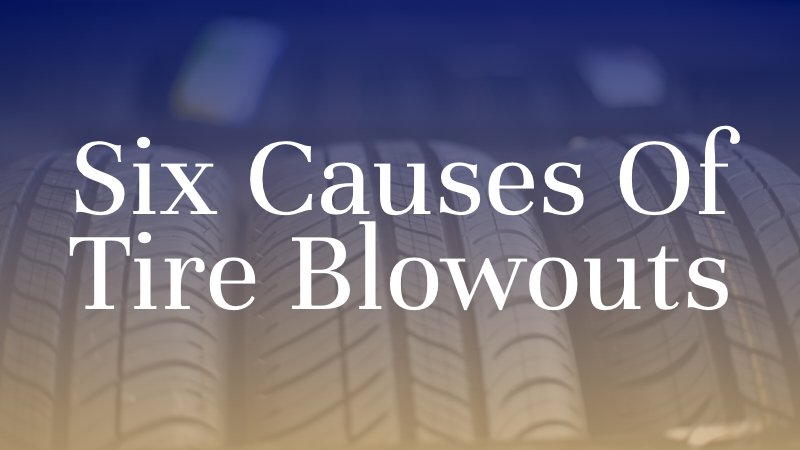
Six Causes of Tire Blowouts
Colburn Law
Posted in Car Accidents on July 13, 2023
Tire blowouts are not only dangerous and frightening, but they can also lead to serious accidents on the road. These incidents can be caused by numerous factors, from lack of maintenance to poor road conditions and manufacturing defects. Understanding the primary causes behind tire blowouts can help drivers prevent them and promote safer travel.
#1: Overinflation
Overinflation makes a tire more susceptible to blowouts. When a tire contains too much air, it can become excessively rigid and stiff. This reduces the tire’s ability to adequately absorb impacts, such as hitting a pothole or debris on the road. The excess pressure can also place too much stress on the tire’s internal components, leading to a blowout.
#2: Underinflation
Conversely, underinflated tires also pose a significant risk. When a tire is not inflated to its optimal level, its components are forced to flex beyond their designed limits to compensate for the lack of internal pressure. This additional pressure can cause internal heat to build up, which can lead to premature deterioration of the tire and result in a potential blowout.
#3: Damage and Wear
Tire damage and excessive wear can lead to blowouts. Conditions that contribute to tire damage include potholes, sharp debris on the road, or failure to rotate the tires regularly. Frequent tire checks can help identify any potential issues before they escalate to a blowout.
#4: Poor Road Conditions
Government agencies have a duty to ensure that roads are in a safe condition for drivers, but not all of them uphold this responsibility. Poorly maintained roads riddled with sharp objects, rough pavement, and severe unevenness can result in tire damage and lead to a blowout.
#5: Lack of Maintenance
Neglecting tire maintenance can cause blowouts over time. Regular maintenance, including routine checks for proper tire pressure, alignment, balancing, and timely rotation, helps tires wear evenly and prolong their lifespan, thereby reducing the likelihood of a blowout.
#6: Defective Tires
Though less common, manufacturing defects can lead to tire blowouts. A tire may suffer a defect during the manufacturing process, or it may be inherently defective in its design. In some cases, manufacturers fail to supply drivers with adequate warnings and instructions to prevent tire blowouts. In these cases, even meticulous maintenance and careful driving cannot prevent a blowout.
Protecting Yourself After a Tire Blowout
Despite taking every precaution, tire blowouts can still occur. In such cases, it’s important to remain calm, maintain control of your vehicle, and get to a safe spot if possible. After the accident, seek medical attention to treat any injuries that you may have sustained.
After ensuring your safety, document the incident, including taking pictures of the damaged tire and any contributing road conditions. If there are any suspicions of a manufacturing defect or improper service, it might be necessary to preserve the blown tire for further examination.
If the actions of a third party cause a tire blowout—for instance, a manufacturer’s defect or inadequate road maintenance by a government agency—you might have grounds for legal action. In these situations, a Washington personal injury attorney can fight for your right to justice. Contact a car accident lawyer as soon as possible to discuss your case and learn more about your legal options.




